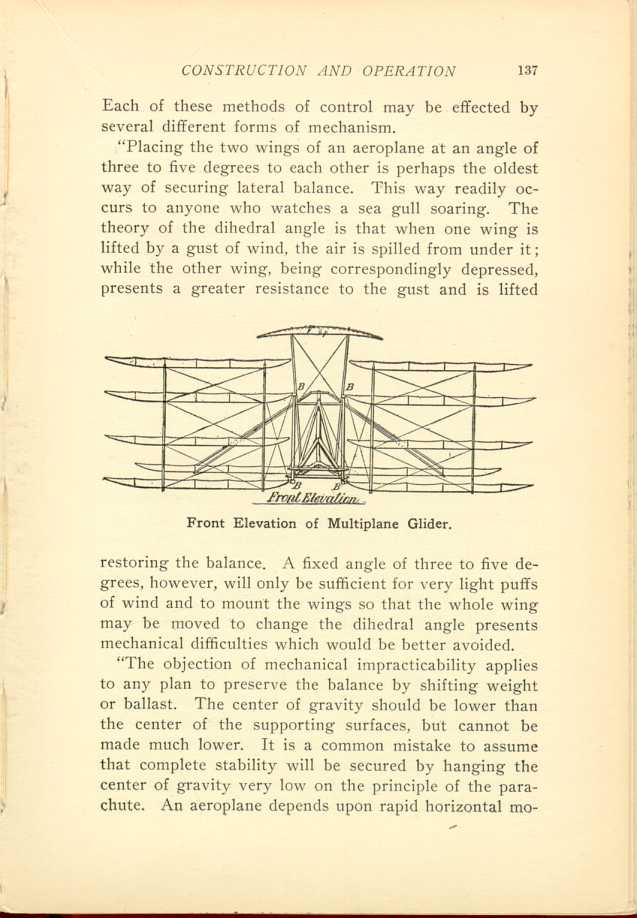Trying to Imitate the Bird.
Writing in Fly, Mr. William E. White says:
"The bird's flight suggests a number of ways in which the equilibrium of a mechanical bird may be controlled.
"Placing the two wings of an aeroplane at an angle
of
three to five degrees to each other is perhaps the oldest
way of securing lateral balance. This way readily occurs
to anyone who watches a sea gull soaring. The
theory of the dihedral angle is that when one wing is
lifted by a gust of wind, the air is spilled from under it;
while the other wing, being correspondingly depressed,
presents a greater resistance to the gust and is lifted

Front Elevation of Multiplane Glider.
[Description: Black and white illustration: multiplane glider from front.]
"The objection of mechanical impracticability applies to any plan to preserve the balance by shifting weight or ballast. The center of gravity should be lower than the center of the supporting surfaces, but cannot be made much lower. It is a common mistake to assume that complete stability will be secured by hanging the center of gravity very low on the principle of the parachute. An aeroplane depends upon rapid horizontal motion